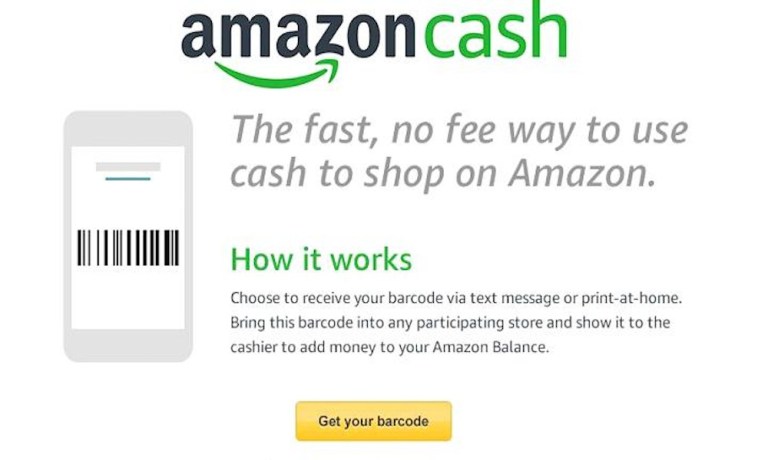
As of yesterday (April 3), Amazon is open for business for cash-only customers — via 10,000 physical locations where a consumer can deposit cash directly into their Amazon balance.
In an announcement made on the company site yesterday, Amazon said the new service allows customers to add “cash to their Amazon Balance at thousands of participating convenience, grocery and drug stores, by purchasing and automatically claiming an Amazon.com Gift Card to your account.”
While users always had a cash option on Amazon — by buying gift cards in a physical location and adding them to an Amazon account — the program helps to streamline the process.
Users now download a barcode to their smartphone and display it to the cashier of a participating merchant. They then add cash, which is made immediately available for use in the customer’s Amazon account. The barcode is reusable — iOS users can save it to their Wallet app; Android users can create a direct shortcut to it on their home screen. Deposits can range from $15 to $500 per transaction, and daily limits may be imposed on a retailer-by-retailer basis.
And, according to Amazon, customers technically don’t need a smartphone to use the program. Consumers can also print their barcode on paper and bring that to a physical retailer.
The program is free to use for customers, according to Amazon, but once funds are deposited, they are Amazon’s permanently — there are no refunds.
Who Amazon Is Reaching
The play for the customer without a credit card, debit card or bank account makes sense for a company that has spent the last several years very publicly touting that fact that its objective in the U.S., and around the world, is to be a little bit of “everything for everyone” when it comes to commerce in general — and digital commerce specifically.
But that’s hard to do if Amazon can’t offer access to the 27 percent of customers that the FDIC estimated in 2015 were unbanked or underbanked, who existed in a largely cash-only capacity. That number may have declined some over the last two years — a poll by Gallup about six month ago indicated that 24 percent of consumers in the U.S. reported making all or most of their purchases with cash — but even factoring in a 3 percent decline, that is still 61 million consumers who prefer to pay in cash and who have until quite recently lacked an easy onramp to do their online shopping.
Amazon is not the first to this market: Most of the news media outlets that reported on the Amazon Cash announcement yesterday were quick to point out that the new service, in many ways, closely resembles PayPal’s My Cash Card and its Green Dot-powered, barcode-only service, both of which are designed to make it fairly friction-free for customers to add cash funds to their PayPal accounts.
Most media outlets also noted that Amazon’s chief rival, Walmart, has long been a pioneer in crafting and offering cash-based services for unbanked and underbanked consumers — whereas Amazon remains fairly new to this area of innovation. A little under a year ago, in fact, Amazon was dealing with a public relations fallout from reports that its same-day delivery tended to exclude minority and working class neighborhoods in the various cities around the nation where the service was available.
Amazon changed that policy — and shortly after the tempest in a tea kettle, Jeff Bezos grabbed some positive headlines for a public statement about just how inclusive he wanted Amazon to be.
Prime for Literally Everyone
“Our goal with Amazon Prime — make no mistake — is to make sure that if you are not a Prime member, you are being irresponsible,” Bezos said.
Amazon Prime has an estimated 50 million to 60 million user base in the U.S. — depending on which outside estimate one favors (Amazon has not released any official numbers).
Today the service is available at 10,000 locations nationwide, but at a limited number of retailers: CVS Pharmacy, Kum & Go, D&W Fresh Market, Speedway, Sheetz, Family Fare and VG’s Grocery.
But Amazon also said that new partners will be added “every month.”
Will the company convince cash-only users to go with them? Time will tell.
But when Amazon says it wants to bring its services to everyone — it is becoming increasingly clear that everyone isn’t a hyperbole — they mean everyone. And if there are customers who just refuse to come to them with cards, then Amazon will take steps out of the process involved in going to them with cash.